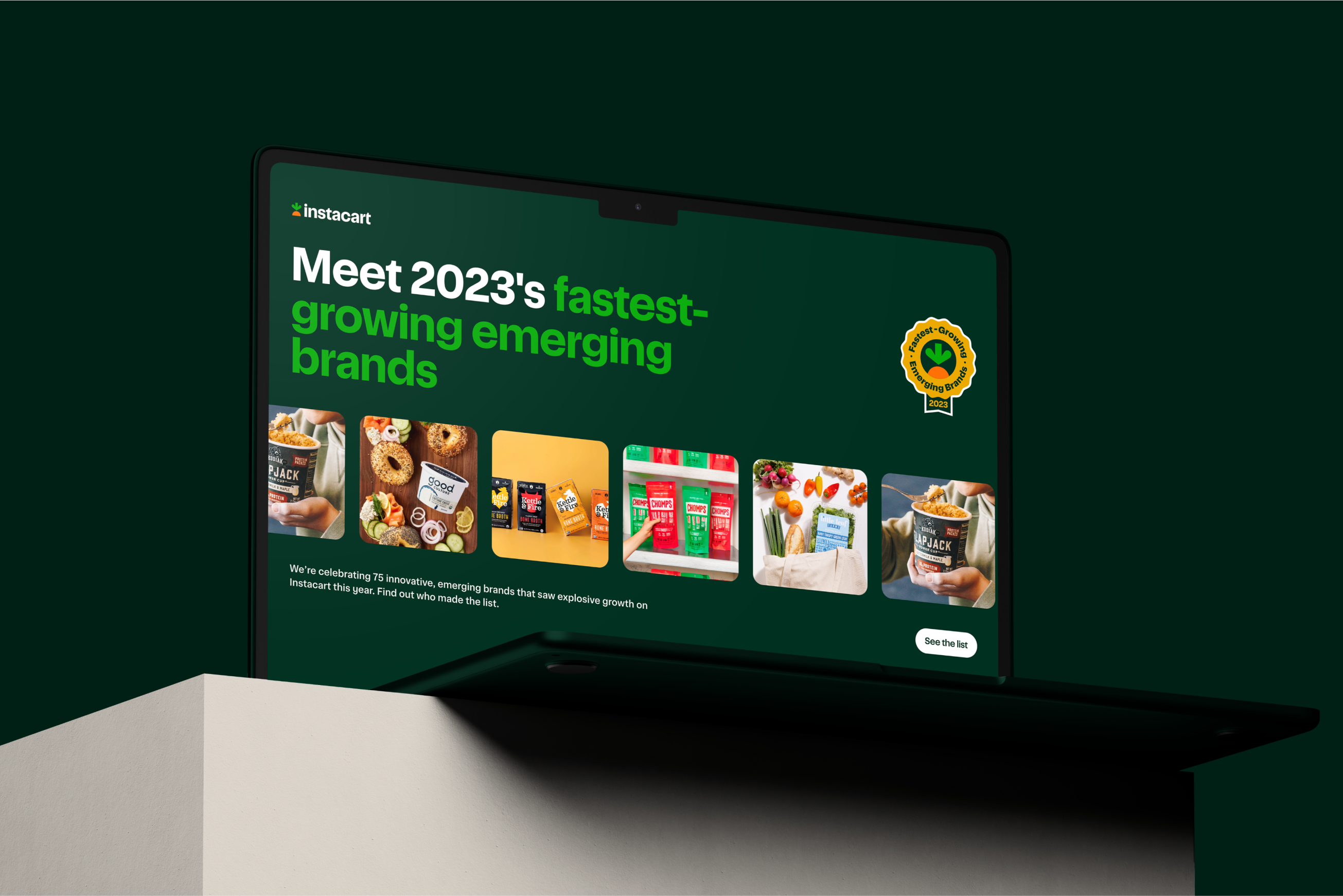B2B marketing is tough. Industries are volatile, there are more decision-makers than ever, and it can feel nearly impossible to stand out in the crowd. Over the last decade, we’ve guided our clients through these pitfalls (and more), and we know what it takes to create great campaigns, produce stellar content, and build winning brands. We also love any chance to showcase our work—and share the insights we’ve learned to help others in the B2B marketing space. So let’s take a look at 10 successful B2B marketing case studies to analyze how we solved each client’s unique challenge, why it worked, and how you can apply the same ideas to your own strategy.
10 Successful B2B Marketing Case Studies
From large campaigns and SEO strategies to experimental formats and standalone pieces of content, each of these projects allowed us to flex our skills and create the best results for our clients.
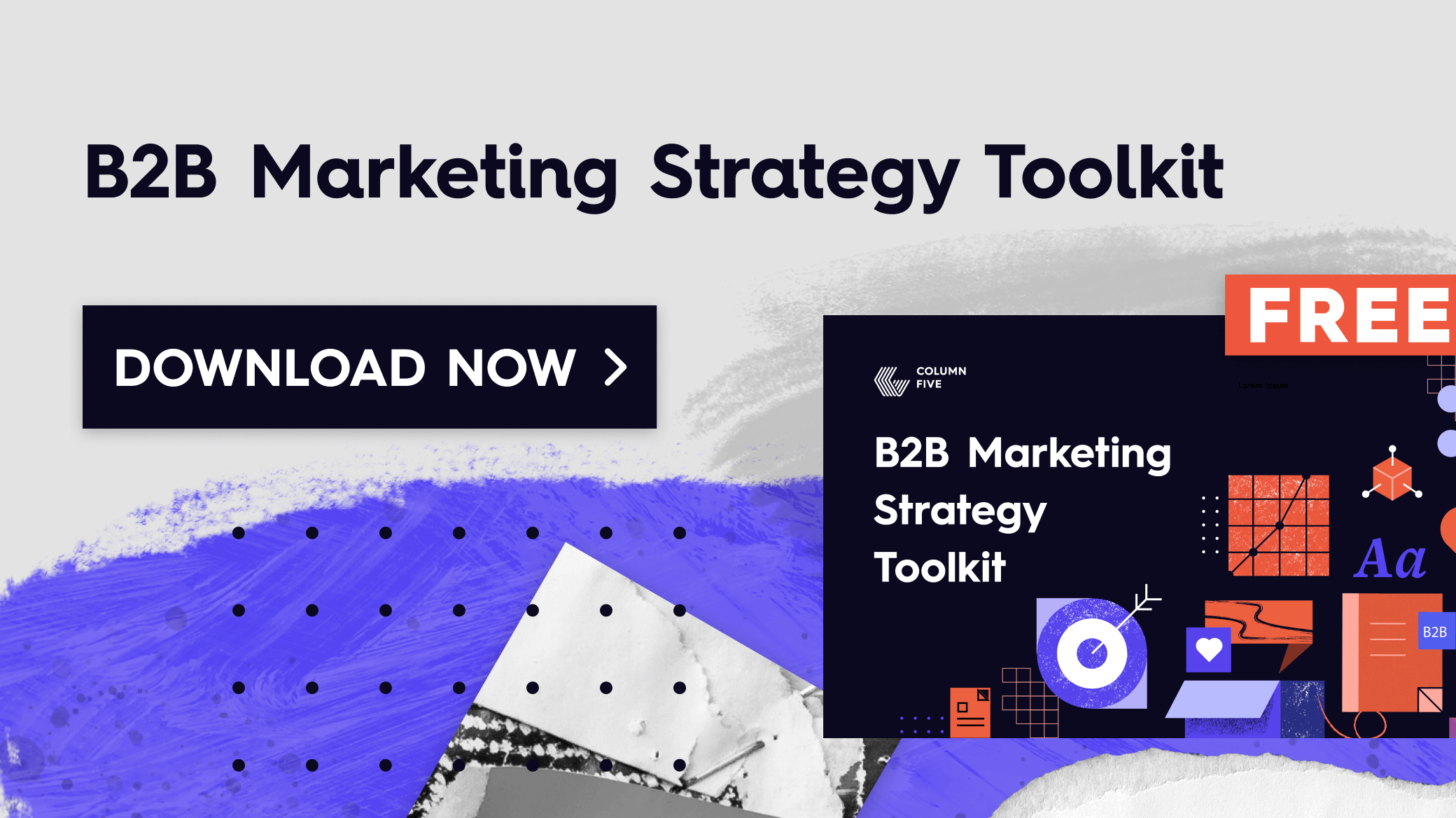
1) Blend Increases Site Traffic 183%
The Challenge: Blend, a FinTech company in the mortgage and consumer banking space, needed to scale content and position the brand as an industry expert. Having never focused on SEO, the team approached us to build their SEO strategy from scratch.
What We Did: To build a robust and high-ranking content ecosystem, we constructed a keyword cluster framework targeting Blend’s core audience and adopted a two-pronged approach to tackle those keywords.
- First, we optimized Blend’s core site pages to drive traffic.
- Then, we created fresh content to expand Blend’s reach.
Collaborating closely with the Blend team, we established an efficient workflow and regular publishing schedule, enabling us to scale content production and consistently support our SEO objectives.
After numerous iterations and over 100 blog articles, Blend achieved significant improvements, including:
- 183% increase in site traffic
- Over 50 unbranded keywords ranking on Page 1
- Site visibility increase from 1.82% to 13.89%
The Takeaway: SEO requires constant adaptation, so it’s important to create a flexible strategy that can evolve as you grow. See our guide to choose the right keywords for your brand, and learn about the latest SEO practices to compete against AI. Although it’s tough to start from scratch, if you target the right keywords with a steady stream of valuable content, you’ll see your rankings improve over time.
2) Lucidworks’ Interactive Educates Executives
The Challenge: Lucidworks helps companies build AI-powered search and data discovery solutions for employees and customers. To position the brand as a thought leader and provide much-needed education about data, Lucidworks wanted to create a fresh piece of content around the provocative subject of dark data.
What We Did: Dark data can be a dry and tedious topic. To make it more engaging and captivating, we proposed an interactive microsite that would immerse users in the story—through the metaphor of an iceberg. Using copy, imagery, animation, and interactivity, we guided users into the dark abyss below the surface to reveal the value of dark data. This creative treatment brought the story to life in an unexpected way, becoming the perfect hero piece to showcase Lucidworks’ expertise.
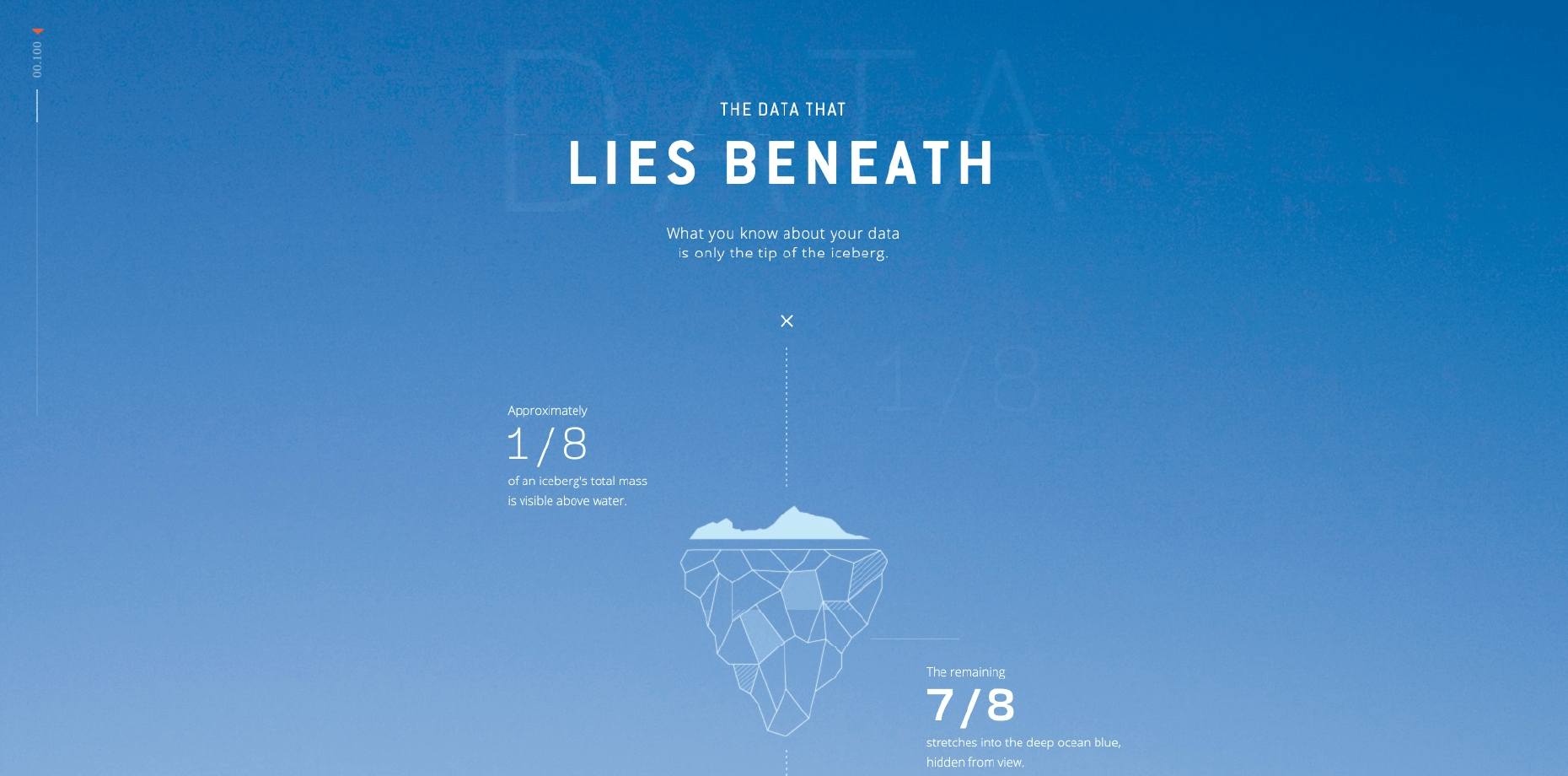
The Takeaway: Visual storytelling can be a powerful tool, and interactive content is especially enticing. If you’re not sure what types of stories you might tell in this format, follow these tips to brainstorm great interactive ideas.
3) Unbabel Creates a NSFW B2B Campaign
The Challenge: Unbabel is a Language Operations platform that facilitates customer interactions in any language. To grab attention and educate small businesses about the significance of Language Operations, the Unbabel team asked us to craft a bold and edgy campaign.
What We Did: We knew we needed to do something unusual and provocative in the B2B space, so we devised a daring campaign centered around the provocative acronym STFU. Traditionally meaning “Shut the F*** Up,” we reimagined STFU to stand for “Start Translating Fearlessly with Unbabel.” This bold phrase allowed us to convey Unbabel’s key benefits across a variety of formats, including a hero video, e-book, blog articles, social media content, and an interactive game. Not only did this campaign turn heads but Unbabel’s CMO called it one of the most visually compelling campaigns they’ve done to date. Best of all, the fresh messaging strategy positioned Unbabel as a true leader in the space.

The Takeaway: One of the biggest myths in B2B marketing is that it has to be boring. Just like B2C, unique and provocative campaigns can be just as successful. If you’re looking to push the envelope in your marketing, follow these tips to brainstorm edgy and exciting ideas.
4) SAP Creates an Award-Winning Podcast
The Challenge: SAP is a global enterprise software company that wanted to raise awareness about its cutting-edge SAP Leonardo technologies, which include machine learning, big data, and blockchain tech. In a push to move beyond traditional B2B content, they aimed to engage a wider audience through innovative and creative storytelling that could captivate and inform people in an unconventional way.
What We Did: Instead of the usual types of B2B content (e.g., ebooks or infographics), we developed Searching for Salai, a fictional 9-part science-fiction podcast. This series reimagined the cultural narrative around new technologies while weaving in elements of time travel, history, and mystery. By combining entertainment with education in an audio format, we engaged SAP’s audience in a unique way, successfully reframing the perception of advanced technologies.
The podcast was a big risk; fortunately, it paid off. Searching for Salai garnered two prestigious awards: Best Podcast/Audio Series and Content Marketing Project of the Year at the Content Marketing Institute’s 2019 Content Marketing Awards.
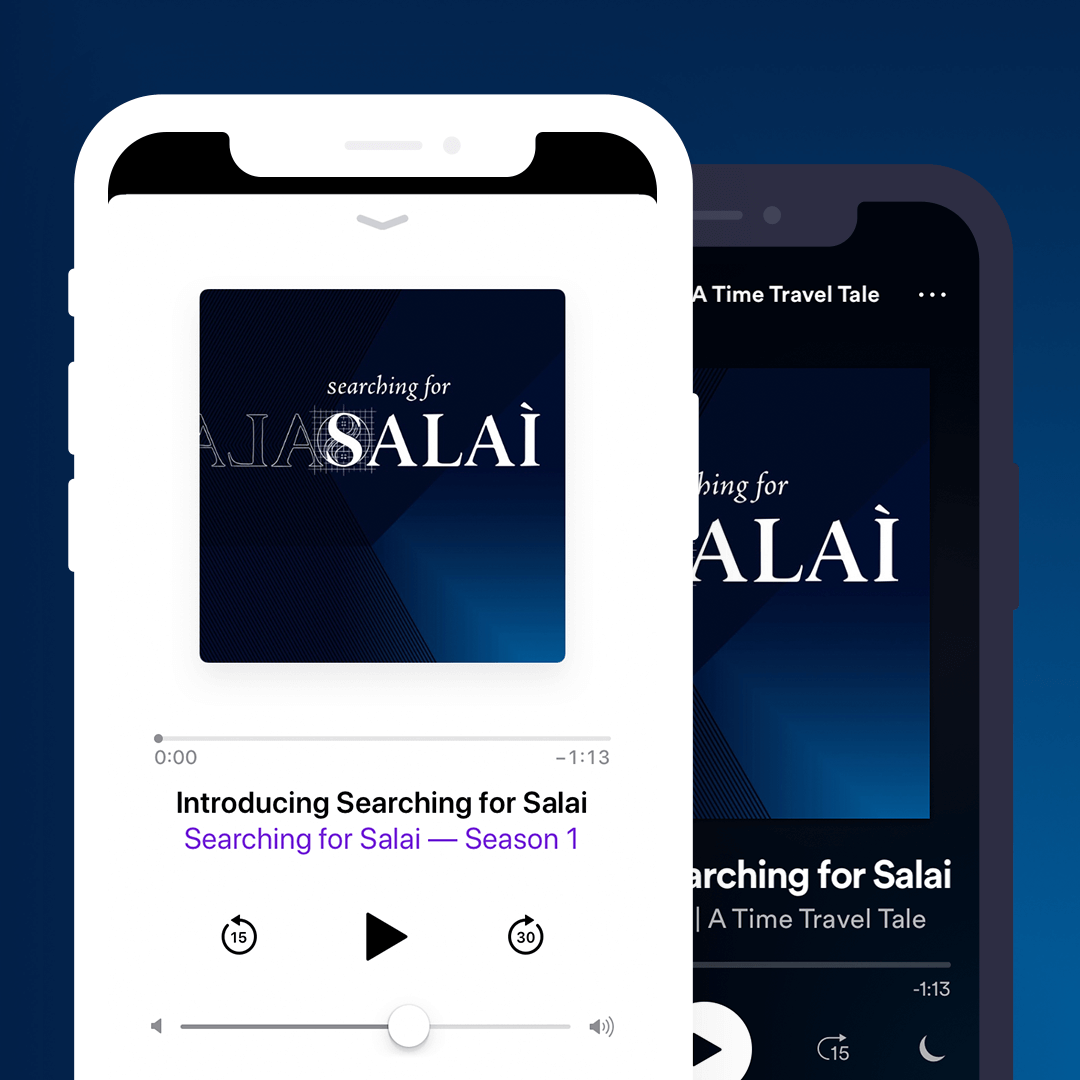
The Takeaway: It’s easy to get used to producing the same type of content, whether it’s blog articles or videos, but experimenting with a different format can give you surprising results. If you’re not sure what that might look like, here are five fresh creative formats to try.
5) Dialpad Gets the LOLs with a Comedic Video Campaign
The Challenge: Dialpad, a communication software solution provider, needed to effectively launch and promote their new VoiceAI product. This required a robust brand strategy, content strategy, and supporting content to increase awareness and clearly communicate the benefits of their innovative features. They asked us to come up with a creative approach to differentiate the brand and engage their audience in a memorable way.
What We Did: We began by refreshing Dialpad’s brand strategy to clearly define their brand heart (including purpose, vision, mission, and values) and target personas. With this strong foundation, we crafted key messaging centered around the tagline “Make Smarter Calls” to ensure consistency across all touchpoints. To lead Dialpad’s content campaigns, we produced two humorous videos spoofing common challenges in phone calls and showcasing VoiceAI’s unique benefits, such as note-taking during meetings and automating voice communications.
We’re happy to say the videos garnered 300,000+ views and were named Webby Awards honorees in the “Branded Entertainment Scripted” category.
The Takeaway: Creative storytelling only works if you deeply understand your core brand story. If you haven’t already done it, build out your brand messaging framework to identify your tagline, value prop, and key brand story pillars, which will help you create on-brand content that is consistent and cohesive—no matter the format.
6) ELM Learning Makes a Splash in a Crowded Industry
The Challenge: ELM Learning, an eLearning agency known for its innovative approach combining neuroscience with human emotion, was struggling to stand out in the corporate learning industry. They needed to increase brand awareness, clarify their offerings, and attract higher-quality leads, so we embarked on a strategic branding engagement to highlight ELM’s unique value proposition and creative strengths.
What We Did: We began by conducting extensive competitive research and stakeholder interviews to understand the market landscape and ELM’s unique strengths. This led us to re-engineer the ELM brand around a “people-first” positioning, emphasizing their trademarked NeuroLearning methodology and the positive experiences clients had working with their team.
We then developed a fresh visual identity, revamped the ELM Learning website, and created new brand messaging and a content strategy that effectively communicated the new brand story to the market. As a result of their rebrand, ELM’s opportunity rate increased 60% in the first 30 days of site/brand launch, attracting multiple high-profile enterprise accounts.
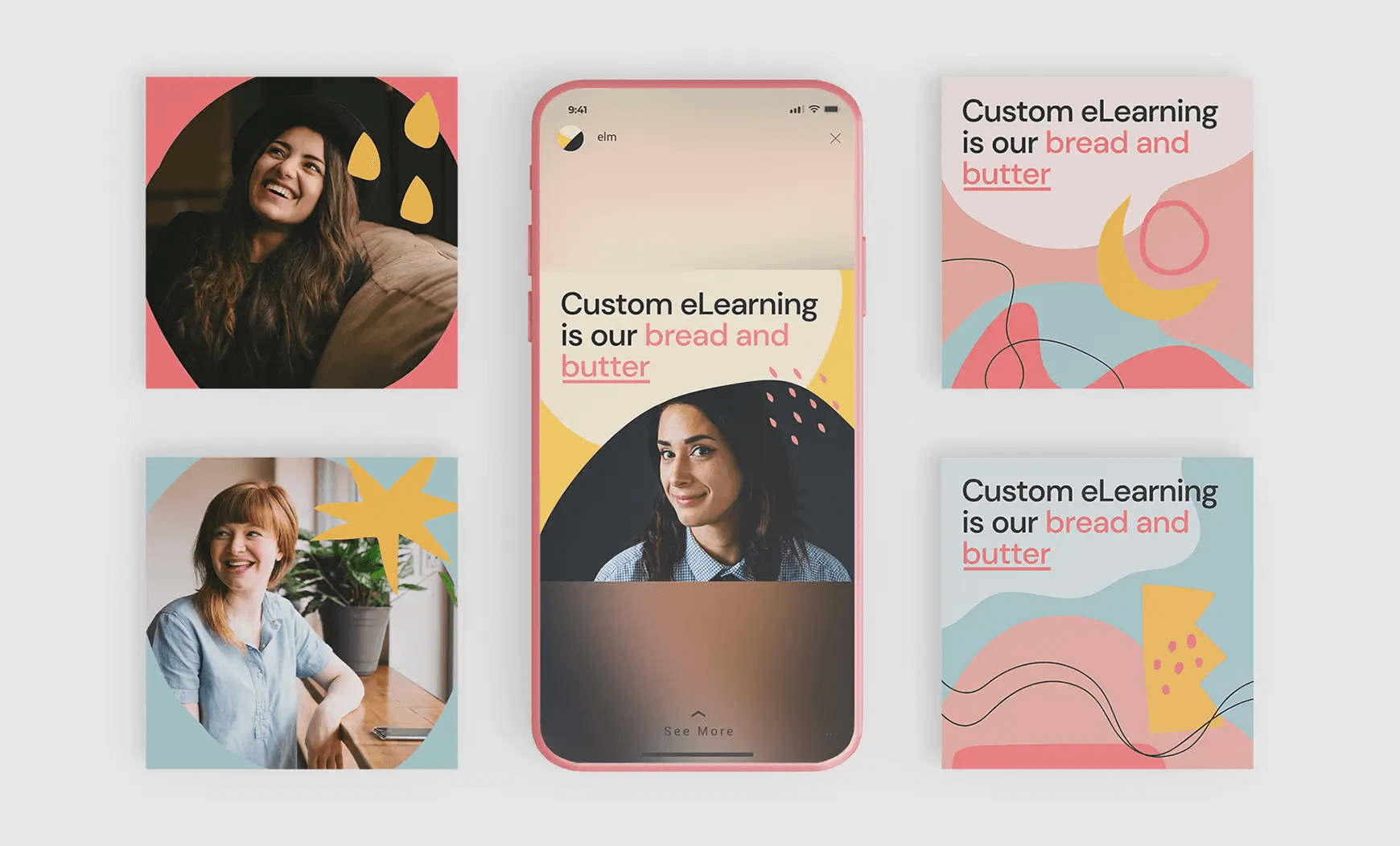
The Takeaway: A successful rebrand is not about a new logo and fresh color palette. It requires serious research and strategic decisions to better communicate a brand’s story. If you’re considering a rebrand, here are 7 things to know before you start.
7) Instacart Finds Fresh B2B Revenue with a New Content Strategy
The Challenge: Instacart needed to scale the B2B side of their business by showcasing how their online and in-store technology supports ambitious retailers. To build awareness and expand reach, they asked us to build and deploy a cohesive content strategy.
What We Did: To increase both awareness and conversions, we bolstered several key parts of Instacart’s strategy.
To establish a stronger, more B2B-centered presence online, we crafted a robust content and SEO strategy around crucial keywords. This blog content resulted in an average ranking increase of 29 spots.
To further engage their audience as they moved down the funnel, we also designed the Instacart Ads Academy, an interactive learning platform where partners could get certified in ad basics. This helped increase familiarity with Instacart’s offerings and provided valuable education.
Additionally, after analyzing existing sales materials, we reimagined how the sales team could use data to highlight insights more effectively. With this improvement, their 5-point scale sales efficacy rating jumped from a 3.8 to a 4.2.
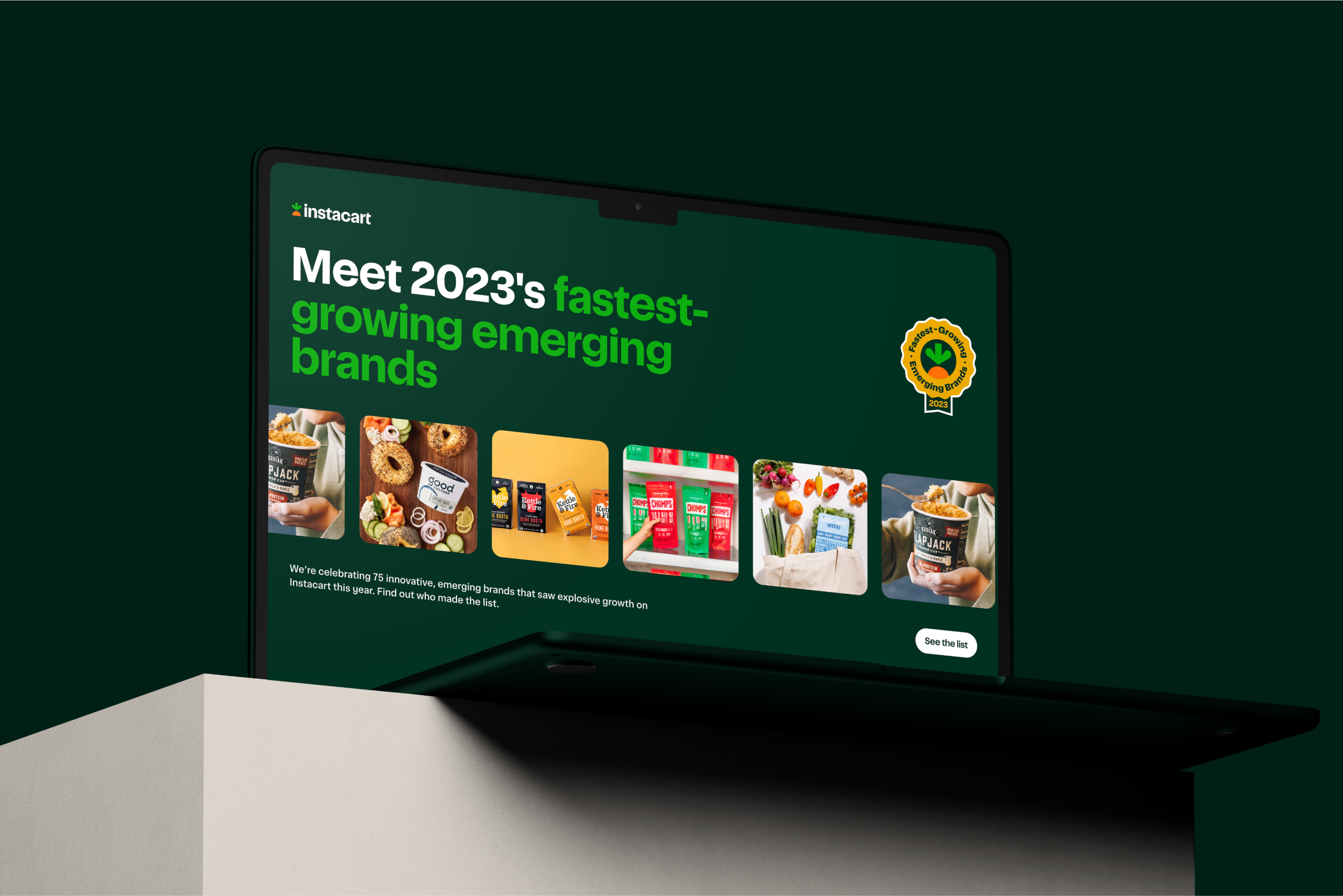
The Takeaway: A well-rounded content and SEO strategy is the key to B2B revenue growth. Follow our tips to master SEO, brainstorm high-value ideas for your audience, and bridge sales and marketing to create a stronger buyer journey.
8) Bloomreach’s Paid Media Strategy Surpasses Goals by 30%
The Challenge: Bloomreach, a platform that personalizes the e-commerce experience, sought to build brand equity and increase awareness with new audiences through their first-ever brand campaign. They approached us to develop a comprehensive multi-channel paid media strategy that would effectively maximize their spending across various platforms.
What We Did: To help them hit their goals, we focused on hyper-segmentation and real-time testing. Utilizing geofencing, historical data, and targeted job titles, we segmented the exact audiences Bloomreach wanted to reach, then partnered with specialized vendors to deploy the campaign across multiple channels (digital platforms, connected TV, programmatic channels, and podcasts).
Through a test-and-learn approach, we continuously improved the campaign’s effectiveness in real time, ensuring optimal results. As a result, we surpassed Bloomreach’s goals:
- Moved 10% of their target account list from ‘unaware’ to ‘aware’
- Garnered 13 million impressions
- Maintained a $10 average CPM
- Secured 429,000 completed audio listens at an average cost of $0.03
The Takeaway: Adopting an agile test-and-learn strategy is a savvy way to optimize spend and improve marketing results across the board. If you’re not familiar with this approach, see our ultimate guide to agile marketing to implement it in your marketing operation.
9) Directive Turns Dull Data into Engaging Storytelling
The Challenge: Directive, a customer generation agency for tech brands, wanted to position the brand as a thought leader in the SaaS space by transforming proprietary data into a comprehensive report about the most effective paid media platforms. They approached us to create a compelling piece of lead-generating content, leveraging our expertise in data storytelling to make the data both accessible and engaging.
What We Did: Initially, Directive envisioned a static PDF report about which platforms bring the highest ROI. However, after assessing their content and goals, we proposed transforming their data insights into a sleek, streamlined interactive experience (along with a downloadable PDF appendix). By blending data storytelling with eye-catching design, we transformed a large volume of data into a compelling narrative, making it easy and enjoyable for their audience to navigate. Best of all, this approach enabled Directive to track traffic, downloads, and other valuable metrics, helping them understand which content was most impactful for their audience.
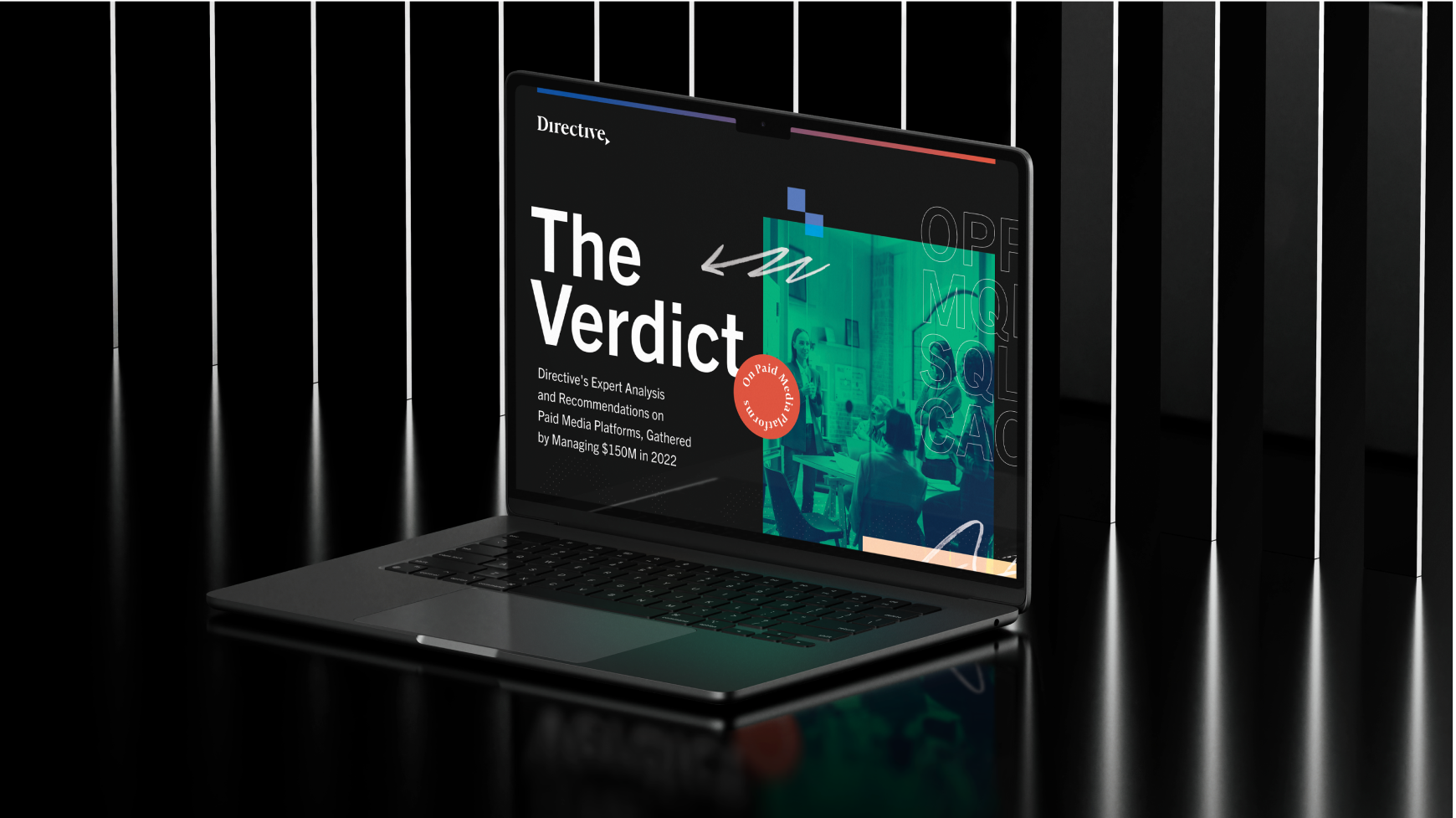
The Takeaway: Data storytelling is always gold for marketing, especially if it’s based on proprietary data. To uncover your own stories, look at your internal data, and find out how to translate those insights into interesting content.
10) Hummingbird Educates with a Fresh Explainer Video
The Challenge: Hummingbird, a financial compliance platform, struggled to convey their innovative technology to an audience that predominantly relies on manual processes. To educate viewers and generate excitement about the platform’s revolutionary impact on financial compliance, we created a sleek and compelling explainer video.
What We Did: Our approach to solving Hummingbird’s communication challenge was two-fold.
- First, we aimed to build suspense and craft an engaging narrative about how Hummingbird’s technology combats financial crime.
- Second, we needed to differentiate Hummingbird from its competition and position it as a unique, forward-thinking company.
To do this, we developed a human-centric story that highlighted the tech-led solution. Then, to infuse the explainer with dynamic energy, we used a mixed-media mosaic approach that combined illustration, photography, and animation (inspired by Hummingbird’s existing brand). The resulting video is now a key piece of sales enablement, allowing the team to communicate the product’s benefits quickly and effectively.
The Takeaway: A good explainer doesn’t just state facts; it uses emotional hooks and visual tools to bring people into the story. To improve your own videos, learn about the keys to a good explainer, and get inspired by these 50 explainer video examples.
How to Master B2B Marketing Yourself
No matter what your industry is, or what unique challenges you face, there are a few key ways to improve your marketing—and make sure you’re growing in the right direction.
- Start with the right strategy. From goals to metrics, platforms to editorial calendars, it takes a lot to build a functioning marketing machine. Use our free B2B marketing strategy toolkit to build a cohesive strategy that covers every gap and helps you achieve your goals.
- Tell stories your competition can’t. As AI-generated marketing floods the Internet, it’s harder and harder to stand out against the competition. That’s why it’s important to showcase what makes your brand special. Start with our tips to brainstorm truly unique stories only you can tell.
- Stay educated. Whether it’s the latest industry news or B2B trends, stay in the loop to keep your brand competitive. You can also subscribe to our Best Story Wins podcast to hear industry leaders’ tips to win hearts, minds, and market share.
Most importantly, make sure you have the right team to win. Find out more about how to curate the perfect content marketing team, and consider bringing in an expert to fill any gaps. You can start your search with our tips to find the right content agency, or take a look at how we tackle content strategies.
Regardless, remember that success doesn’t happen overnight. Good content marketing requires patience, experimentation, and diligence.
Good luck out there.


